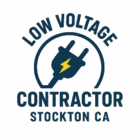Low Voltage Solutions for Stockton Warehouses & Distribution Centers
Introduction
Stockton, California, has become a vital logistics hub for Northern California thanks to its strategic location, access to major highways, expanding distribution networks, and reliable Stockton Low Voltage Wiring Services that support business growth. Warehouses and distribution centers in Stockton handle everything from food products to e-commerce goods, requiring reliable infrastructure to maintain operations. One of the most important yet often overlooked elements of this infrastructure is low voltage systems.
Low voltage solutions—such as structured cabling, security systems, access control, and energy-efficient lighting—help warehouses operate smoothly, safely, and cost-effectively. This article explores the role of low voltage systems in Stockton’s warehouse and distribution sector, their benefits, essential components, and future trends.
Table of Contents
- What Are Low Voltage Solutions?
- Why Low Voltage Systems Matter in Warehousing
- Key Low Voltage Systems for Stockton Warehouses
- Structured Cabling
- Security & Surveillance Systems
- Access Control Systems
- Fire Alarm & Life Safety
- Audio-Visual & Communication Systems
- Energy-Efficient Lighting
- Benefits of Low Voltage Integration in Warehouses
- Compliance & Safety Standards in California
- Challenges & Common Mistakes to Avoid
- Future Trends in Low Voltage for Distribution Centers
- Conclusion & Key Takeaways
- FAQ Section
What Are Low Voltage Solutions?
In electrical terms, low voltage typically refers to systems that operate below 50 volts (AC) or under 120 volts (DC). These systems are not designed to power heavy machinery but instead support communication, monitoring, security, and energy efficiency. Examples include:
- Structured cabling for internet and data networks
- CCTV and IP cameras for surveillance
- Access control for employee and visitor management
- LED lighting and building automation
According to the National Electrical Code (NEC), low voltage wiring provides safer, more efficient power for specialized systems compared to traditional high-voltage wiring.
Why Low Voltage Systems Matter in Warehousing
Stockton warehouses often operate 24/7, with tight supply chain timelines and heavy worker traffic. Low voltage systems ensure:
- Operational Efficiency – Reliable data cabling supports automated inventory tracking and real-time order fulfillment.
- Safety & Security – CCTV and access control protect employees, assets, and shipments.
- Cost Savings – LED lighting and energy management reduce utility bills.
- Scalability – Low voltage infrastructure makes it easier to upgrade to smart technologies without rewiring the entire facility.
Key Low Voltage Systems for Stockton Warehouses
1. Structured Cabling
Structured cabling forms the backbone of modern warehouse operations. It supports:
- Internet connectivity for warehouse management systems (WMS)
- VoIP communications for internal staff
- IoT devices like RFID scanners and smart sensors
2. Security & Surveillance Systems
CCTV and IP camera networks are critical for theft prevention, OSHA compliance, and real-time monitoring. Stockton’s distribution centers often integrate AI-enabled analytics to detect unusual behavior, improving response times.
3. Access Control Systems
Restricting entry to sensitive areas like inventory storage or server rooms ensures compliance with safety and insurance requirements. Options include:
- Key card systems
- Biometric scanners
- Remote entry management
4. Fire Alarm & Life Safety
California law requires warehouses to maintain fire detection systems. Low voltage fire alarms, smoke detectors, and emergency intercoms safeguard workers and inventory.
5. Audio-Visual & Communication Systems
Intercoms, paging systems, and video conferencing help coordinate large teams across Stockton’s expansive warehouse floors.
6. Energy-Efficient Lighting
Low voltage LED systems reduce power consumption by up to 60% compared to traditional lighting. Smart lighting with occupancy sensors further cuts costs while enhancing workplace safety.
Benefits of Low Voltage Integration in Warehouses
- Lower operational costs through energy savings
- Improved worker productivity with reliable connectivity
- Enhanced safety from surveillance and fire protection systems
- Future-ready infrastructure that supports warehouse automation
- Regulatory compliance with California building codes and safety standards
Compliance & Safety Standards in California
Stockton warehouses must comply with:
- California Electrical Code (CEC)
- Occupational Safety and Health Administration (OSHA) standards
- NFPA 72 (National Fire Alarm and Signaling Code)
- Local Stockton permitting and inspection requirements
Partnering with certified low voltage contractors ensures compliance and reduces liability risks.
Challenges & Common Mistakes to Avoid
- Undersizing cabling systems – limits future upgrades
- Improper camera placement – creates blind spots
- Neglecting backup power – causes downtime during outages
- Skipping professional installation – risks non-compliance and system failures
Future Trends in Low Voltage for Distribution Centers
- AI-Powered Surveillance – real-time analytics for theft prevention
- IoT-Enabled Warehouses – smart sensors for inventory and equipment monitoring
- 5G & Edge Computing – faster data transfer and lower latency
- Sustainability Initiatives – solar-powered low voltage systems for greener operations
According to Deloitte’s 2023 logistics report, smart warehouse adoption is projected to grow by 45% in the next five years, making low voltage systems a strategic investment.
Conclusion & Key Takeaways
Stockton’s warehouses and distribution centers depend on efficient, scalable, and secure infrastructure. Low voltage systems—from structured cabling to AI-driven surveillance—play a critical role in keeping operations safe, compliant, and future-ready. By investing in professional installation and ongoing maintenance, warehouse operators can reduce costs, improve safety, and stay competitive in a rapidly evolving logistics landscape.
FAQ Section
Q: What is considered low voltage in warehouse systems?
A: Generally, any system operating under 50 volts AC is classified as low voltage, including security cameras, fire alarms, and cabling systems.
Q: How do low voltage systems improve warehouse safety?
A: They support surveillance, access control, and fire detection, ensuring employee protection and asset security.
Q: Can low voltage wiring handle automation and IoT devices?
A: Yes, structured cabling supports IoT sensors, RFID, and other smart warehouse technologies.
Q: Are low voltage installations required by law in California warehouses?
A: Certain systems like fire alarms and emergency communication are required by California codes and OSHA standards.
Q: How much can LED lighting save compared to traditional lighting?
A: On average, warehouses can cut lighting costs by 50–60% with low voltage LED systems.
